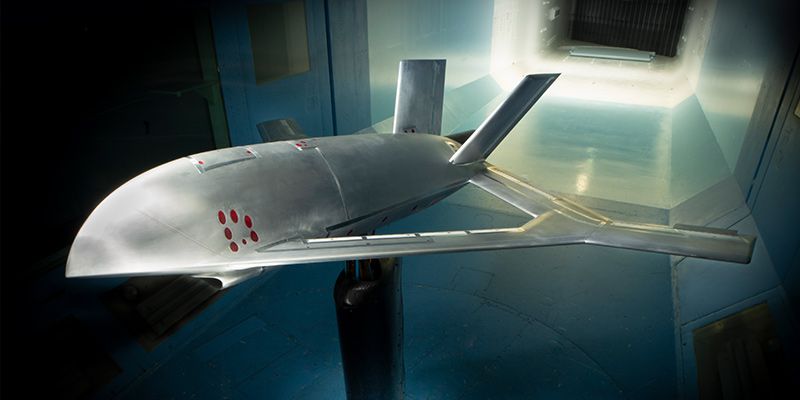The Defense Advanced Research Projects Agency (DARPA) is financing an “X-Plane” experimental aircraft. The new “X” aircraft will test control utilising Active Flow Control as part of the CRANE (Control of Revolutionary Aircraft with Novel Effectors) programme (AFC).
Even though modern Western armies are facing more “earthy” challenges, such as a lack of ammunition, inadequate logistics, and a dearth of armoured vehicles, it is still extremely important to conduct almost fundamental research into new military technologies. This is because new military technologies are expected to play an increasingly important role in the future of warfare. In no other way will it be possible to lay the technological groundwork for the next generation of military systems than by doing so.
In the aviation industry of the United States, new technologies are typically evaluated with the help of experimental aircraft (demonstrators) of the “X” series. The X-62 VISTA (Variable Stability In-flight Simulator Test Aircraft) is the final aircraft in the “X” series. It combines the F-16D with engine thrust vectoring and is known as the “Variable Stability In-flight Simulator Test Aircraft.” It started with the launch and capture of an X-61 Gremlins drone using transport aircraft as the intermediary.
Now, as part of the CRANE effort, the AFC technology will be used to construct a new aircraft that will be designated as “X.” The manufacturing of “X” will be handled by the Boeing subsidiary Aurora Flight Sciences.
Aurora has been successful in securing funding for the construction of a detailed technical design as well as an analysis of the many production alternatives, which will include the building of flying software.
This phase comes to a close with a comprehensive assessment of the CDR proposal (Critical Design Review). After receiving its final CDR certification, Aurora intends to produce an airworthy demonstrator.
AFC technology actively modifies the aerodynamic profile (surrounding airflow) of an aircraft’s wings and fuselage using just compressed air jets. This enables complete aeroplane control. Thus, it is theoretically conceivable to eliminate the aircraft’s mechanically controlled control surfaces, such as the elevator and rudder, ailerons, and flaps.
Existing aeroplanes are equipped with passive technologies to alter airflows, such as turbulators (vortex generators) and “chevrons” with teeth on engine nacelles. AFC operates on the same concept but performs differently depending on the flight circumstances; it adds controlled energy or momentum to the flow around the fuselage or wings.
AFC holds the potential to deliver a number of benefits, such as the potential simplification of the wing and aircraft design (resulting in easier maintenance and a lower failure rate), the construction of lighter and stronger wings, a reduction in the overall weight of the aircraft, improved aerodynamics (resulting in lower fuel consumption), the ability to store more fuel in the wings, and a number of other advantages. In addition, radar stealth will be much improved as a result of the absence of control surfaces, which will result in an increased number of gaps, edges, and transitions.

If DARPA approves the CDR and the program moves to the next phase, Aurora will build an experimental aircraft with a maximum takeoff weight of 3,175 kilograms (7,000 pounds) and a wingspan of 9.14 meters. The cruise speed of the apparently jet aircraft is given as 0.7 M. Flight tests may begin in 2025.
This aircraft will have a CJW (Co-Planar Joined Wing) and two vertical tail surfaces. In the wind tunnel, Aurora has already tested a quarter-scale model with 14 air nozzles and eight different air channels.
On the upper side of the fuselage, the aircraft’s depiction depicts small air intake and exhaust apertures. Therefore, the aircraft will likely draw in and compress air before distributing it to the different nozzles via a system of air ducts.
AFC can ultimately provide three main advantages: increased range, increased cruise speed, and reduced fuel usage. The range and cruising speed of future U.S. military aircraft are essential criteria. Specifically for operations over the enormous Pacific Ocean. Additionally, AFC is easier to maintain and has a smaller logistical footprint.
When will manned aircraft be equipped with AFC? We cannot say. In any case, we will be the first to witness jet drones with stealth technology or various guided missiles with AFC.
Nevertheless, according to The Aviationist, the sixth-generation NGAD (Next Generation Air Dominance) American fighter designed for operations over the Pacific will no longer have conventional control surfaces. The thrust vectoring of the engines and the use of AFC concepts are required for NGAD control. Using AETP (Adaptive Engine Transition Program) engines, the NGAD aircraft may achieve both an exceptional range and a highly evolved level of stealth.
